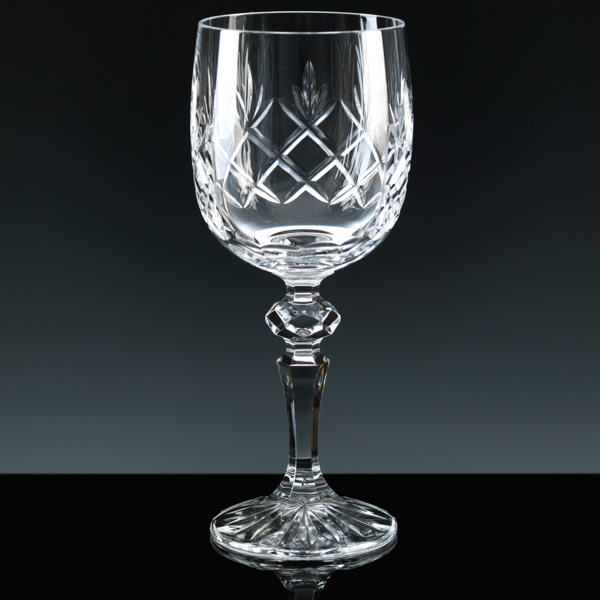Lead Crystal
Buy Lead Crystal from a Glass Engraver's Website. Many items available in Lead Crystal.
What is Lead Crystal?
Lead Crystal is not to be confused with Crystal Glass or Glassware. European standards dictate that, to be named Lead Crystal, the manufacturer’s ‘mix’ must contain 24% Lead Oxide. It is Lead Oxide that gives Lead Crystal glasses their distinctive weight and ‘colour’.
When mentioning ‘colour’ in this topic, we mean ‘refractive colour’, like that viewed when light passes through a prism. In fact, when Lead Crystal has been cut into a pattern, it is often described as ‘prismatic’.
Weight and Colour of Lead Crystal
Different manufacturers, or ‘blowers’ use different mixes of oxides for their Lead Crystal, to enhance the weight or colour, or both. A requirement by consumers is first, ‘weight’; when they pick up a glass, they feel for the weight of the item.
|
The next requirement is for ‘colour’; they hold the Lead Crystal item up to the light, to view its clarity and colour, particularly the colour when it has been cut and the light is transformed by the cuts, into the colours of the rainbow. The ‘mix’ or ‘batch’ as it is known, is a carefully guarded secret from blower to blower. Cut Lead CrystalWhen a Lead Crystal Glass is passed to the Cutter, he will mark out the pattern on the glass, using an indelible pen (before these were invented, pitch was used). Then, looking through the glass, the cutter will press the glass against a diamond-impregnated wheel, twisting the glass downwards, guiding the wheel along the mark on the glass. It takes roughly 5 to 10 minutes to hand cut a piece of Lead Crystal on a wheel in this fashion. The result is Cut Lead Crystal, but not as you would know it. |
Inverness Crystal Wine Glass. |
At this point, the Cut Lead Crystal is a frost colour along all the lines of cutting. Similar in colour to that of Crystal Engraving. In order to return the Lead Crystal to clarity, the glass item is dipped in acid. A mix of Hydrofluoric and Sulphuric acids are used. After dipping, the glass is rinsed in clear water and washed off. Prior to the use of acids, it was the apprentices job to rub along the cut lines with a cloth dipped in a pumice powder; which is why all apprentices hands were so gnarled! Sometimes, today, when required, a Glass Cutter will take the freshly Cut Lead Crystal and ‘cut’ it again, but using a Cork Wheel. This also has the effect of polishing the Cut Lead Crystal.


